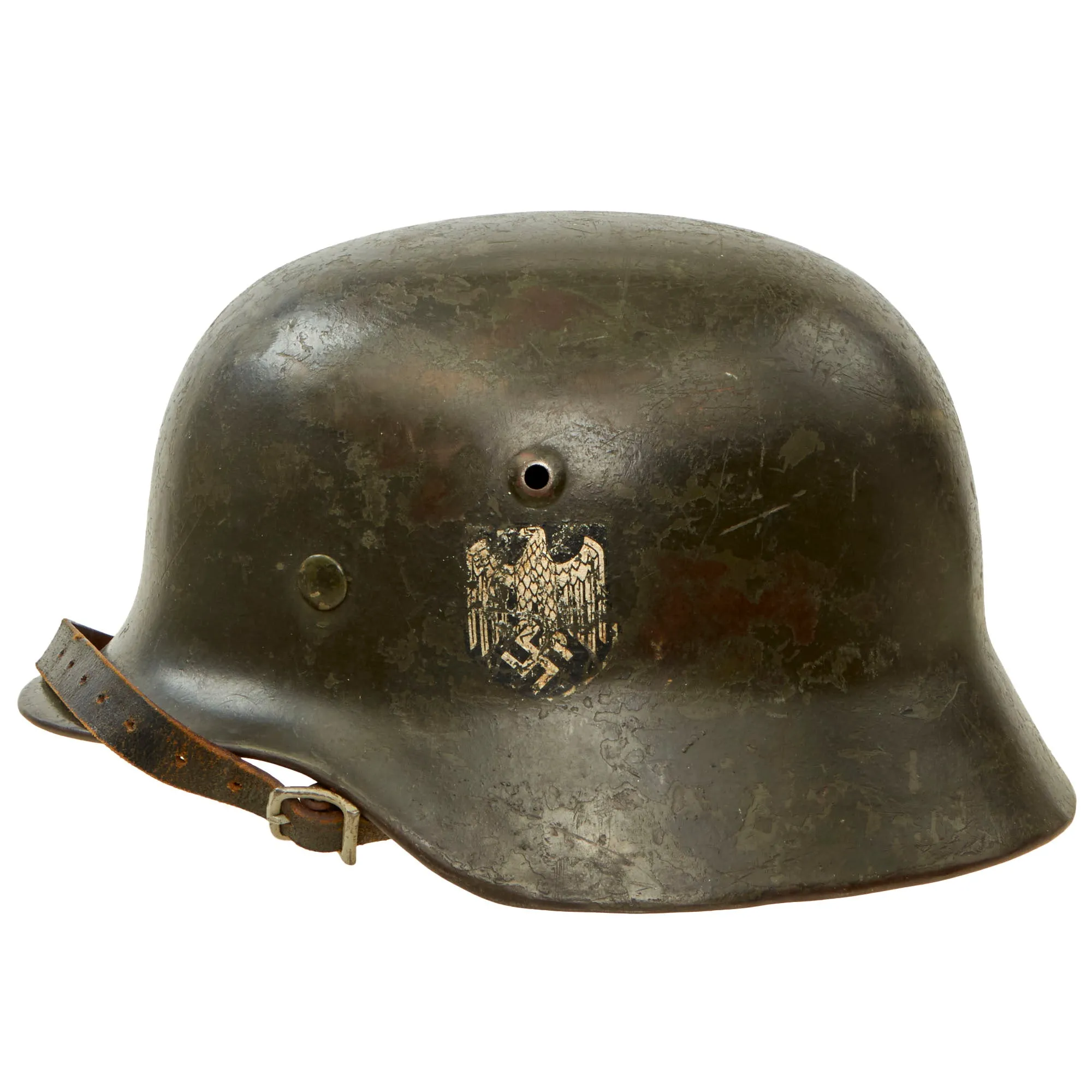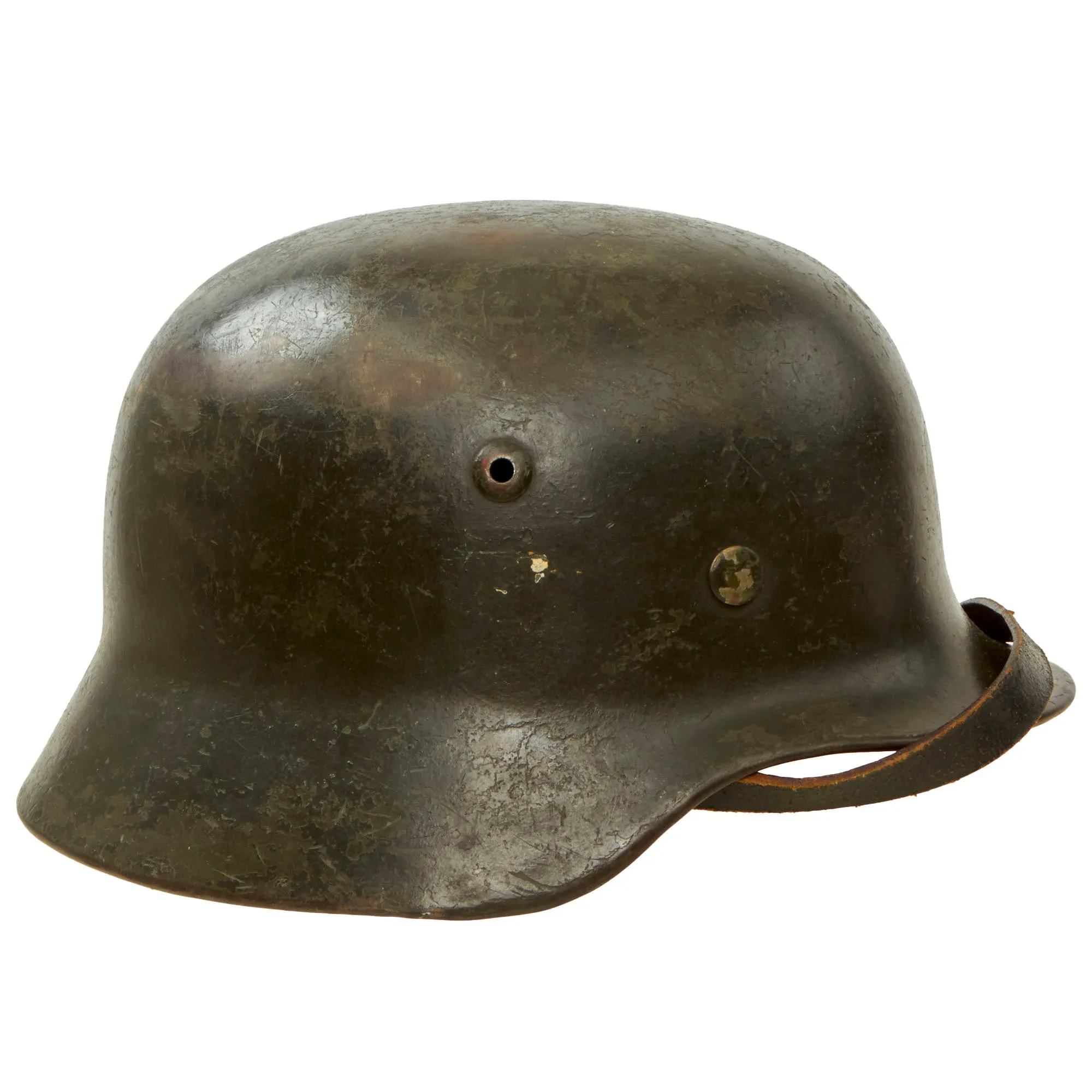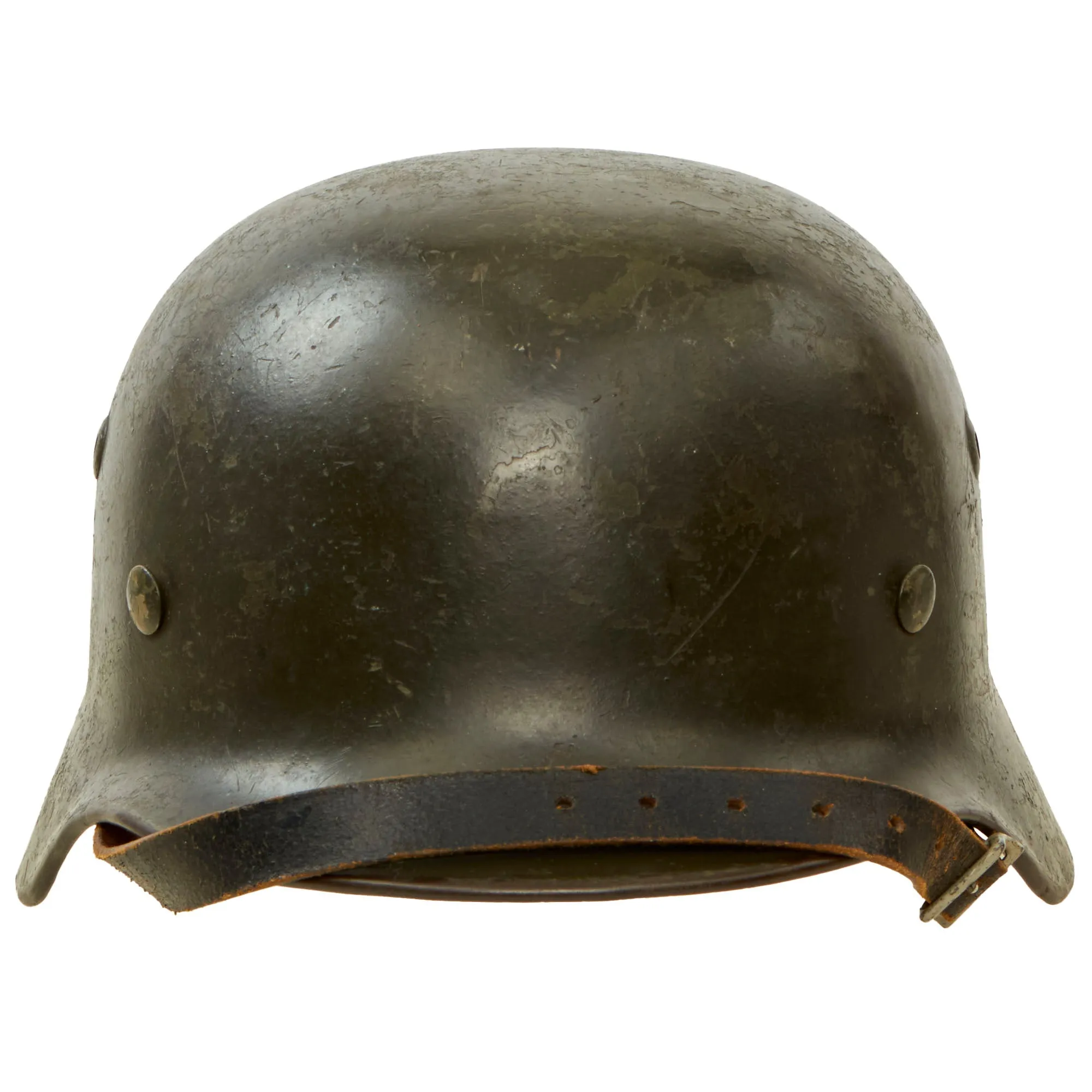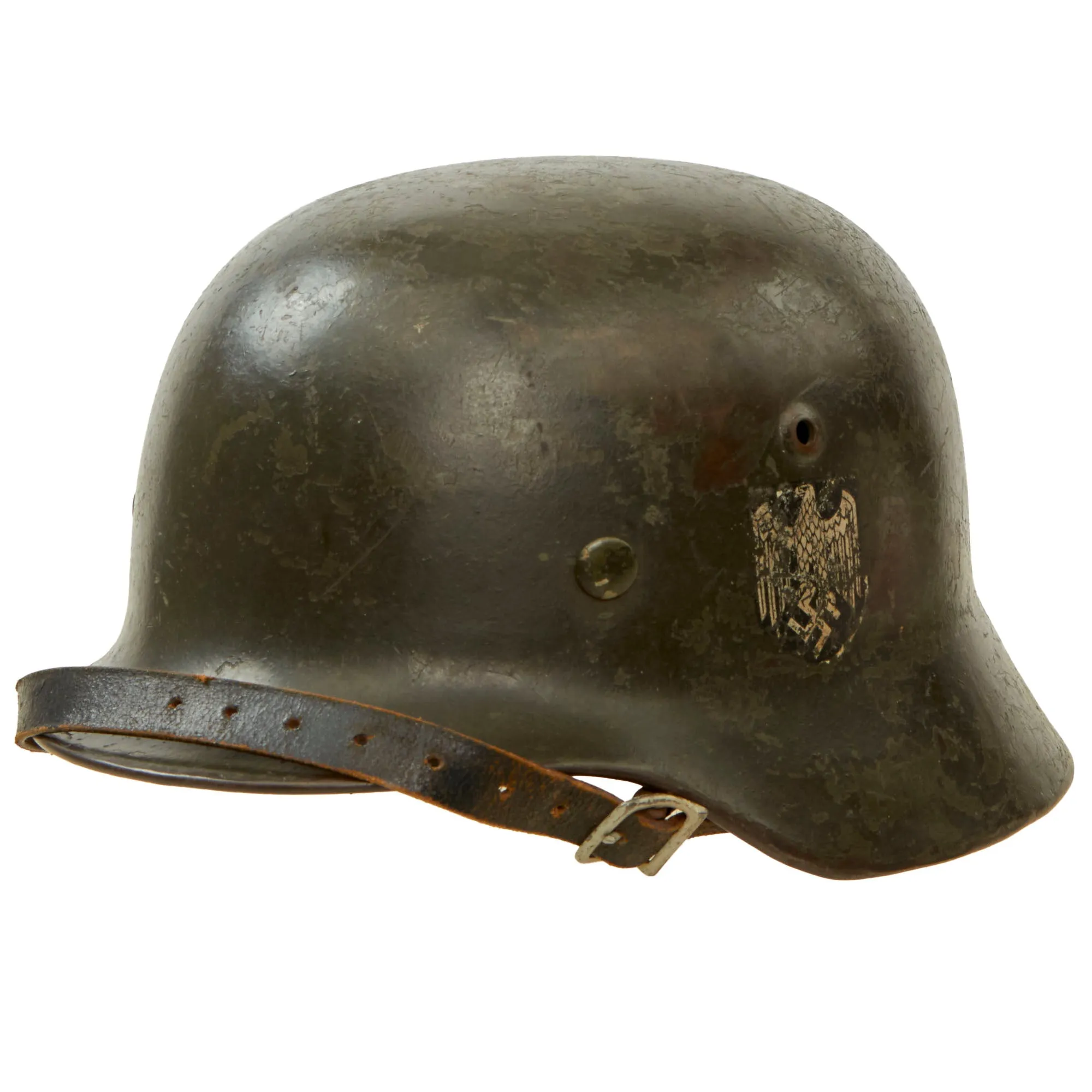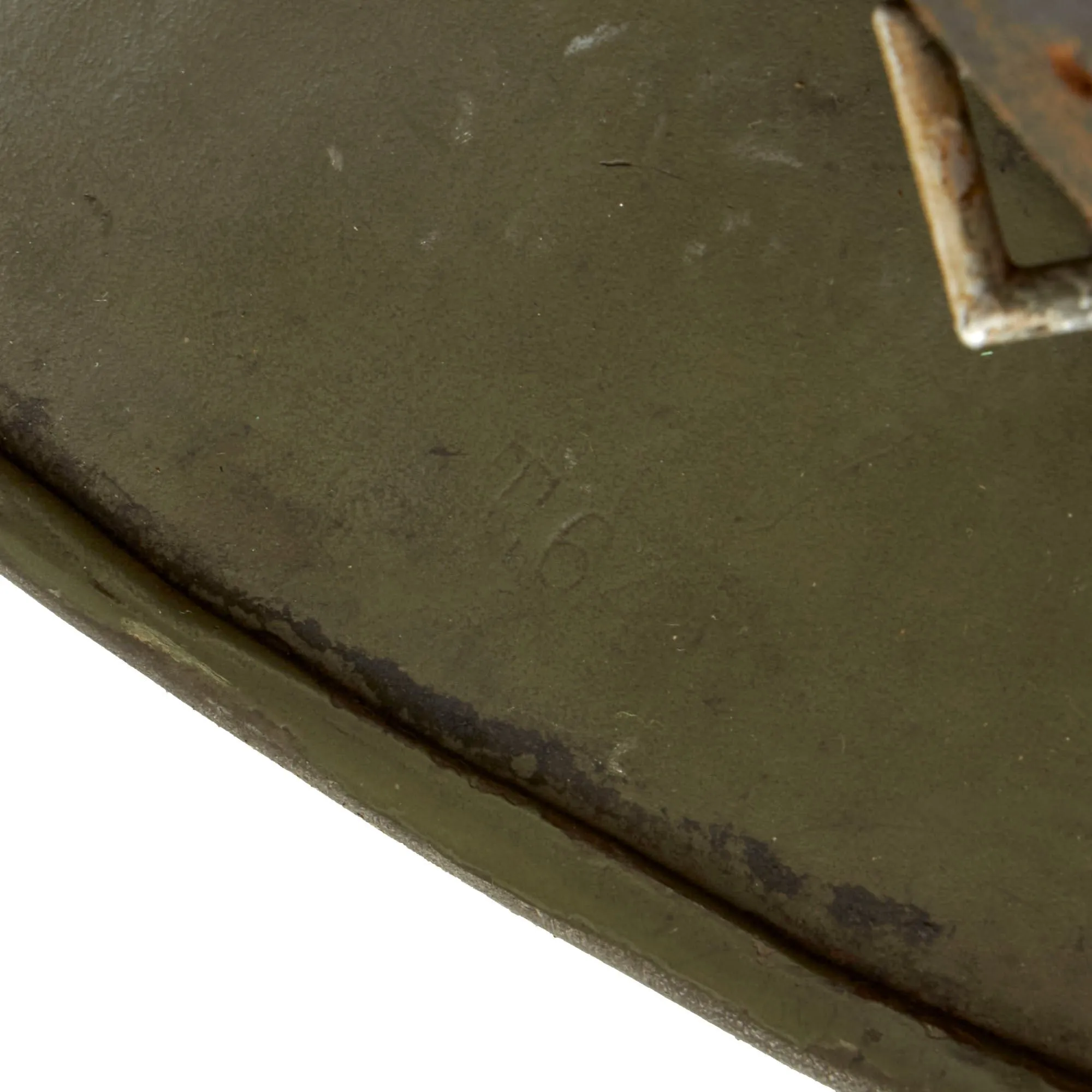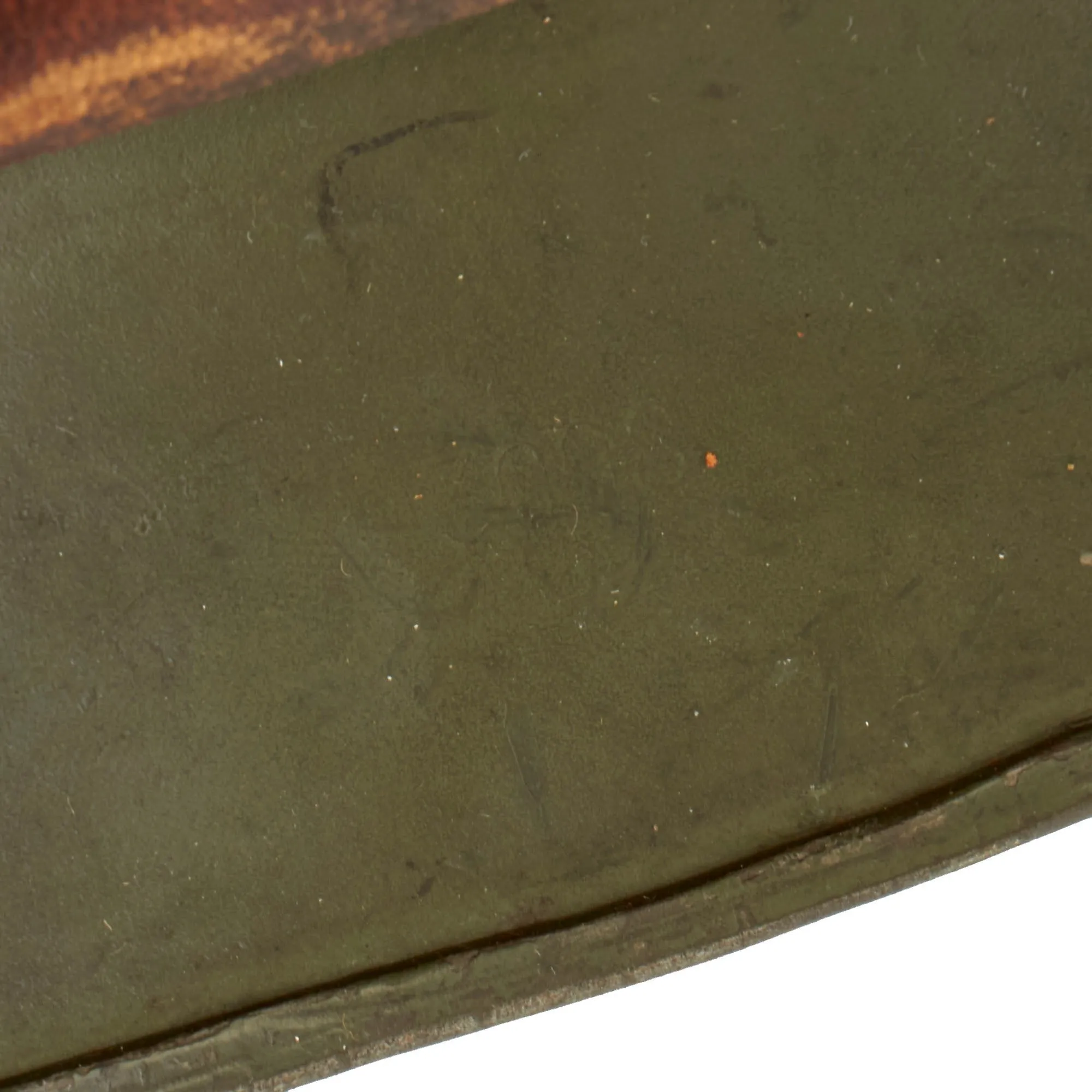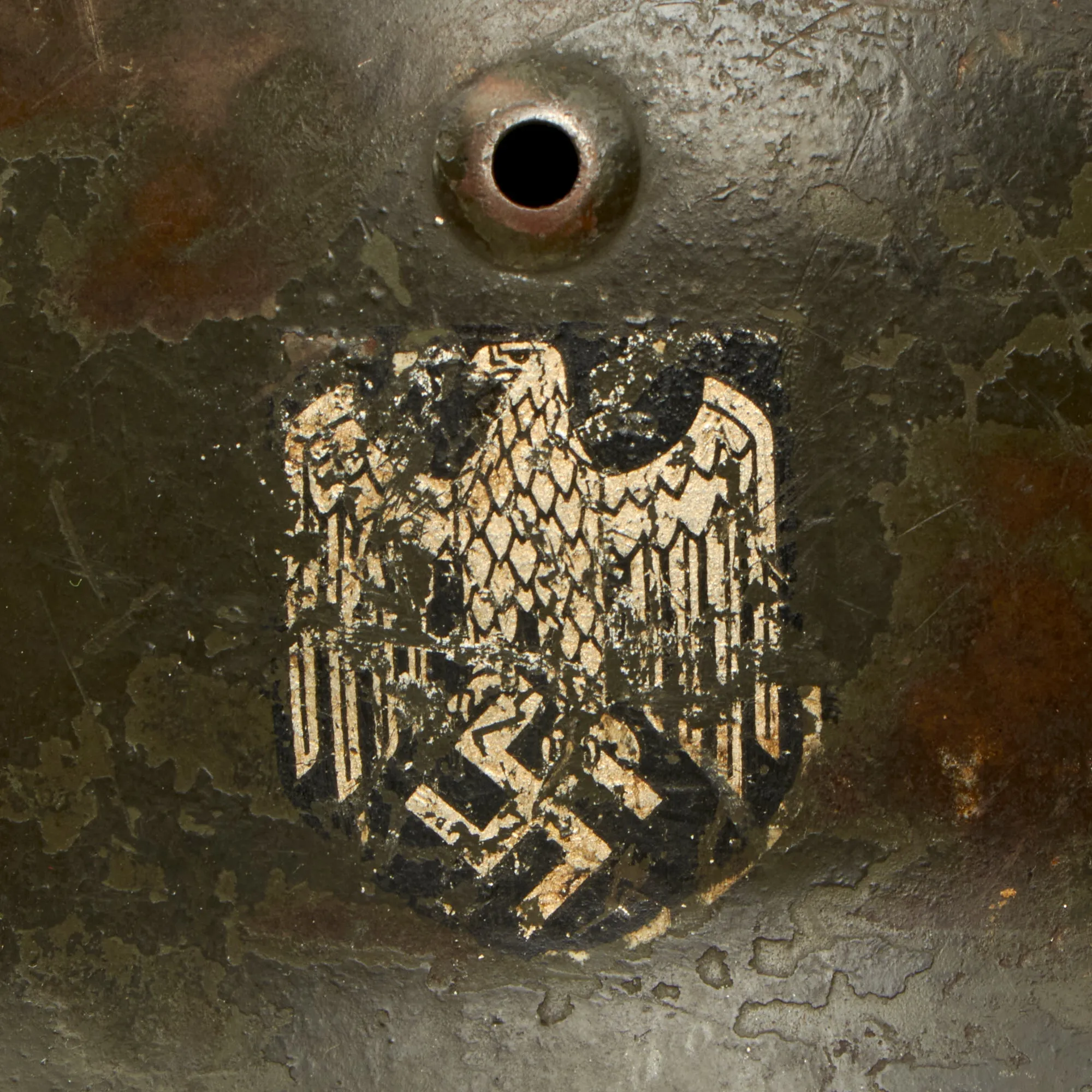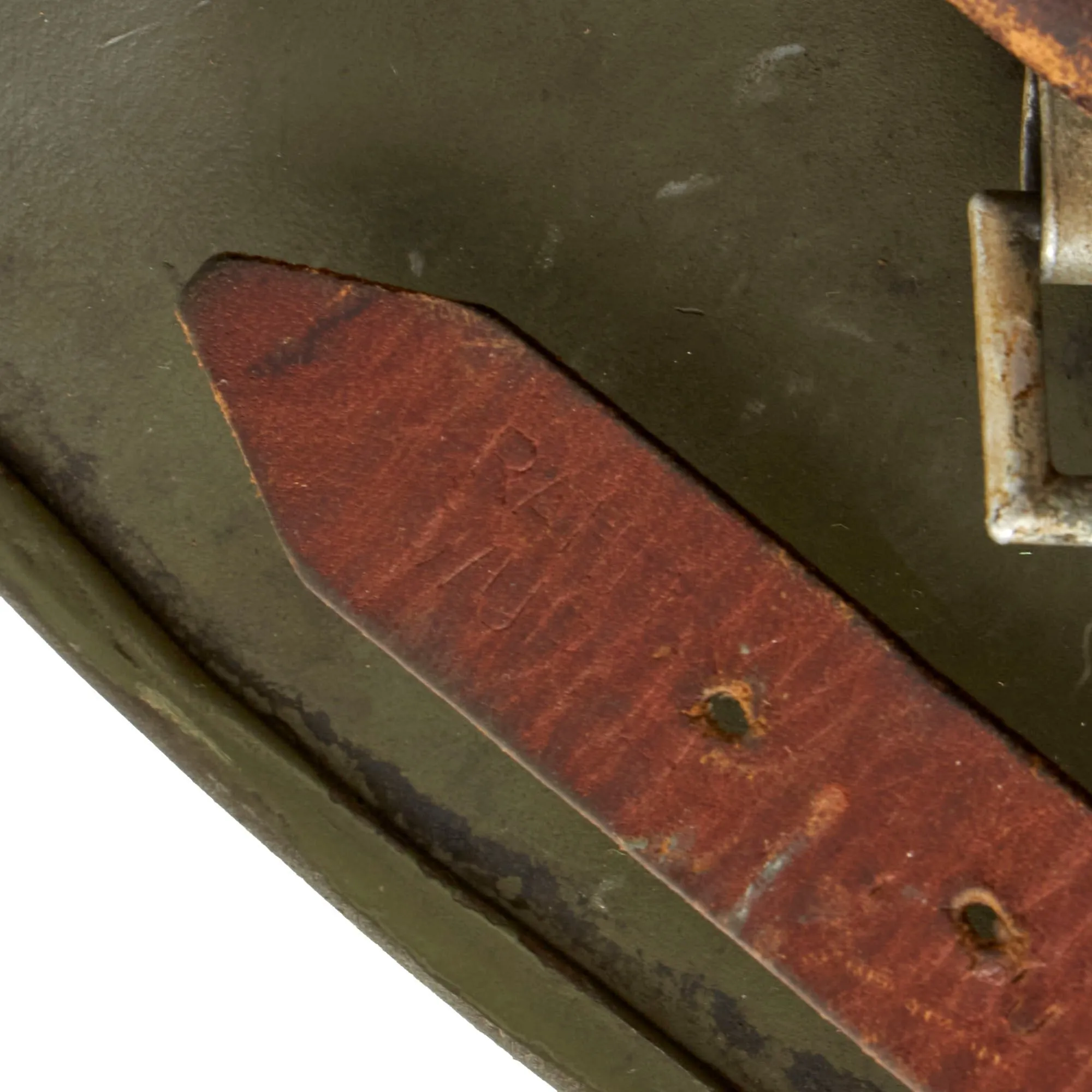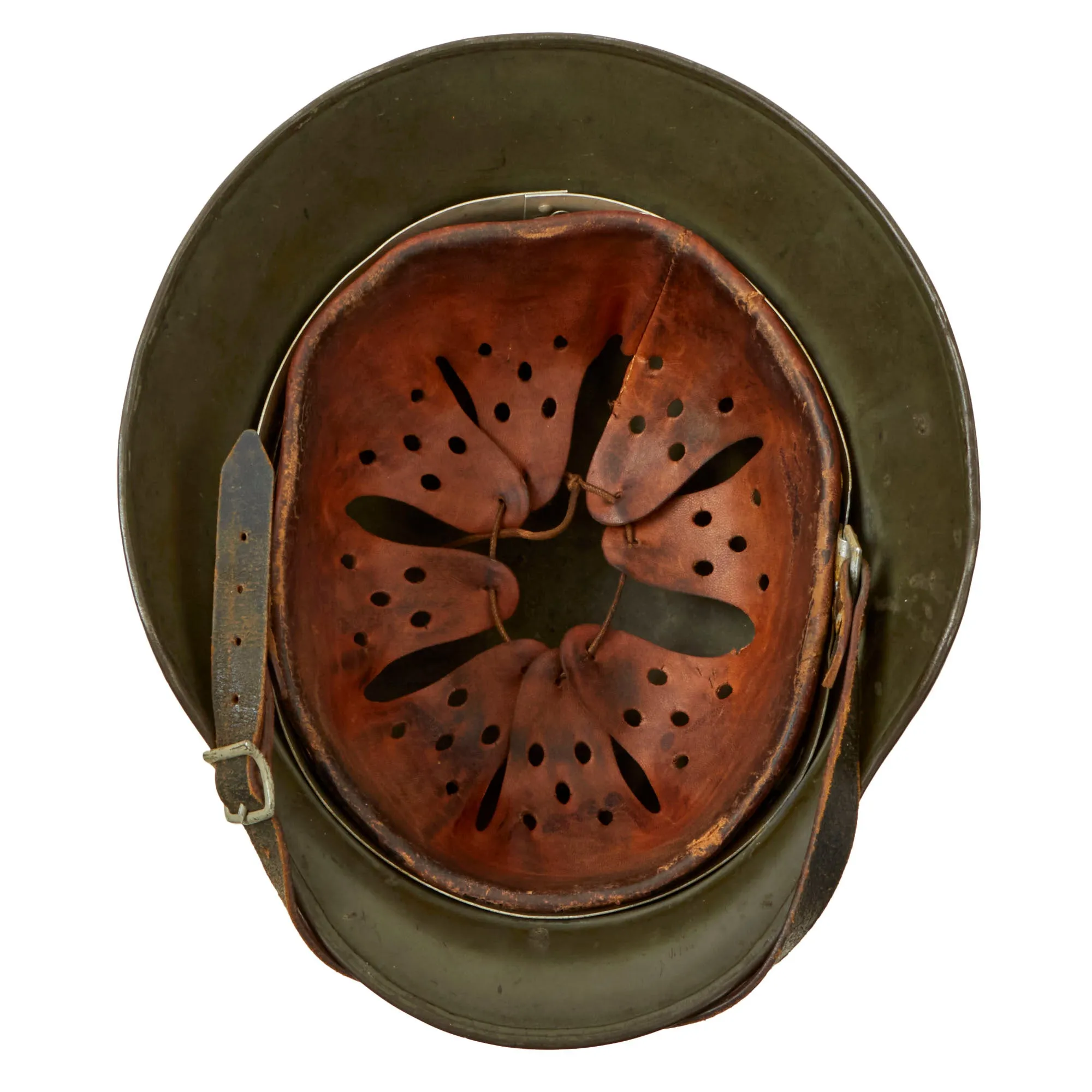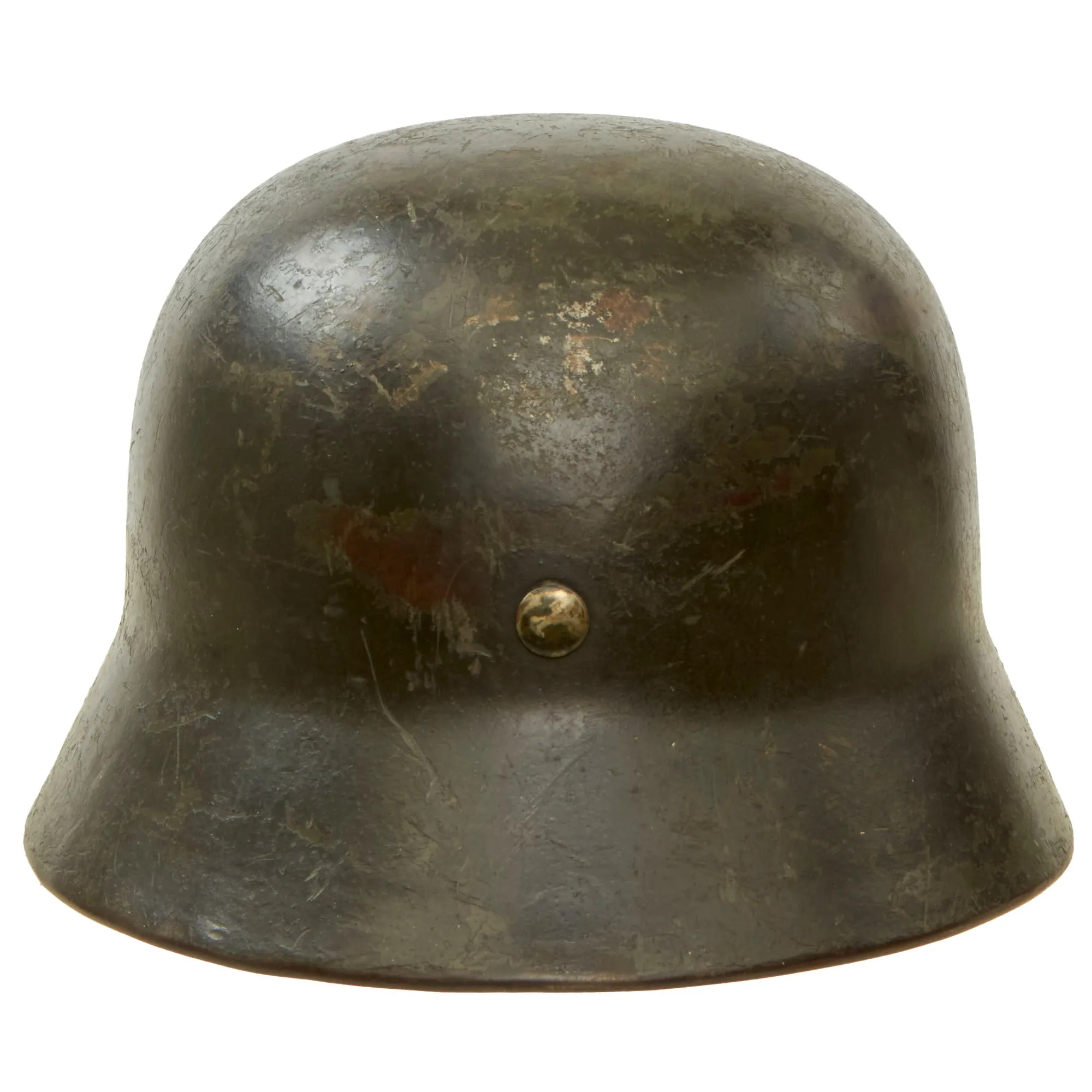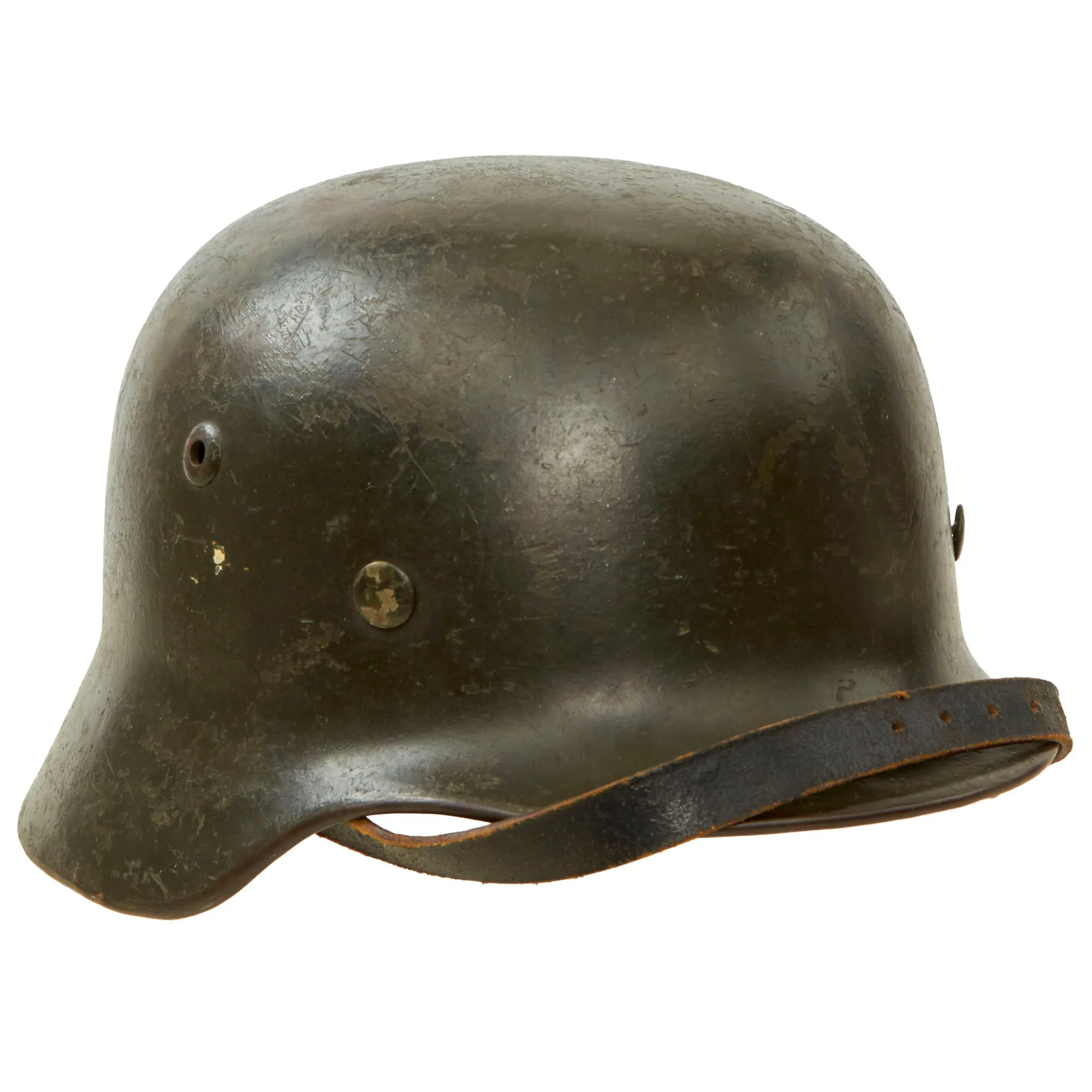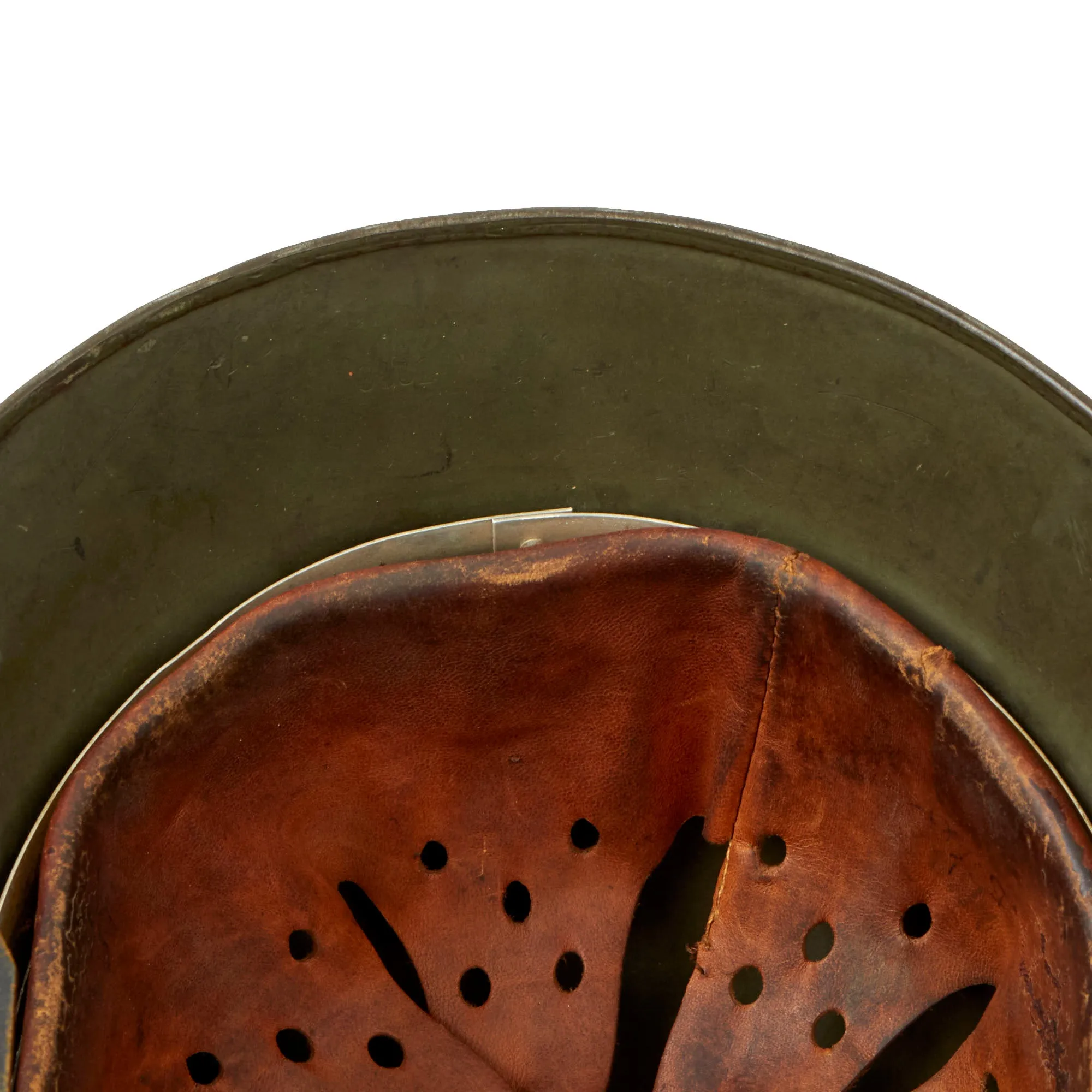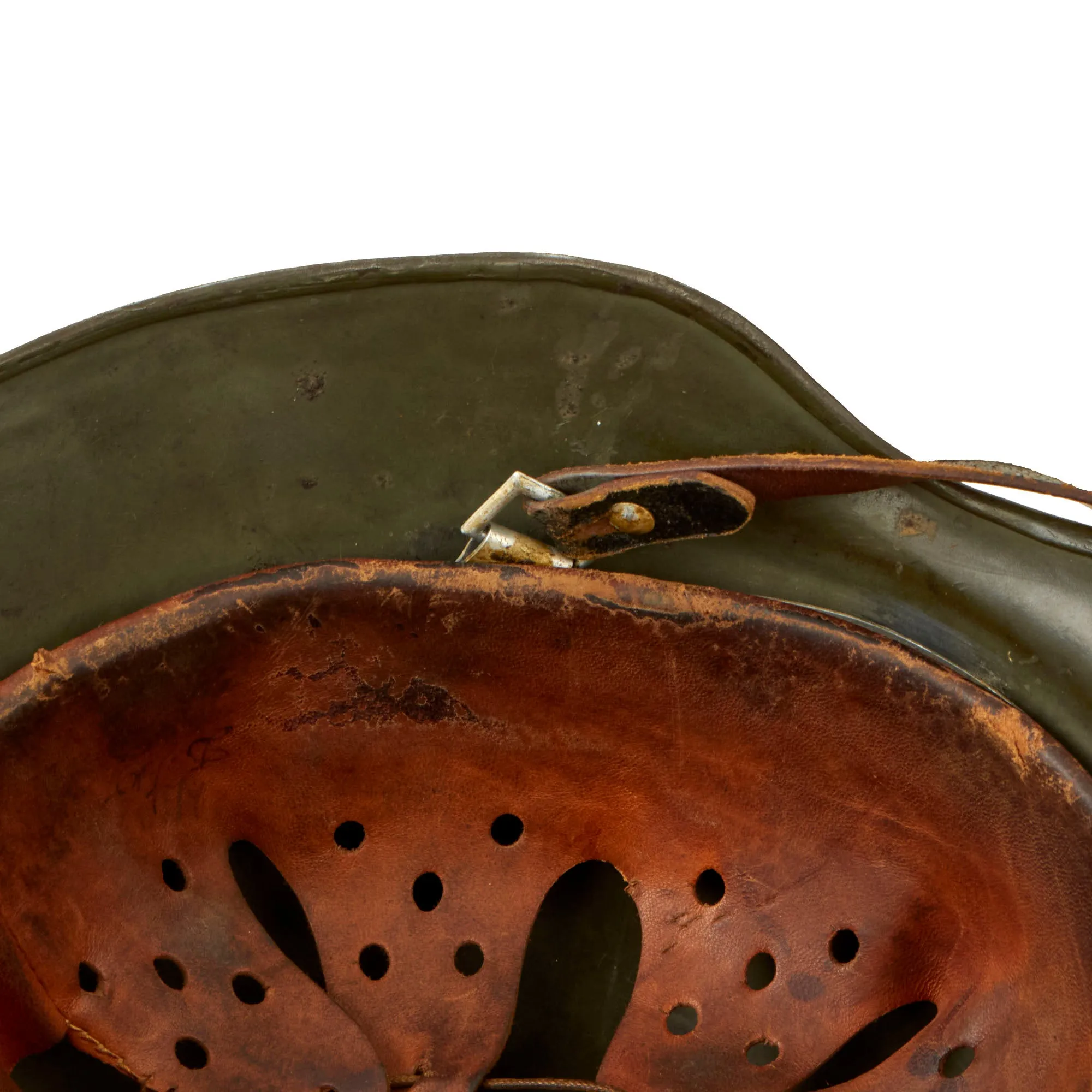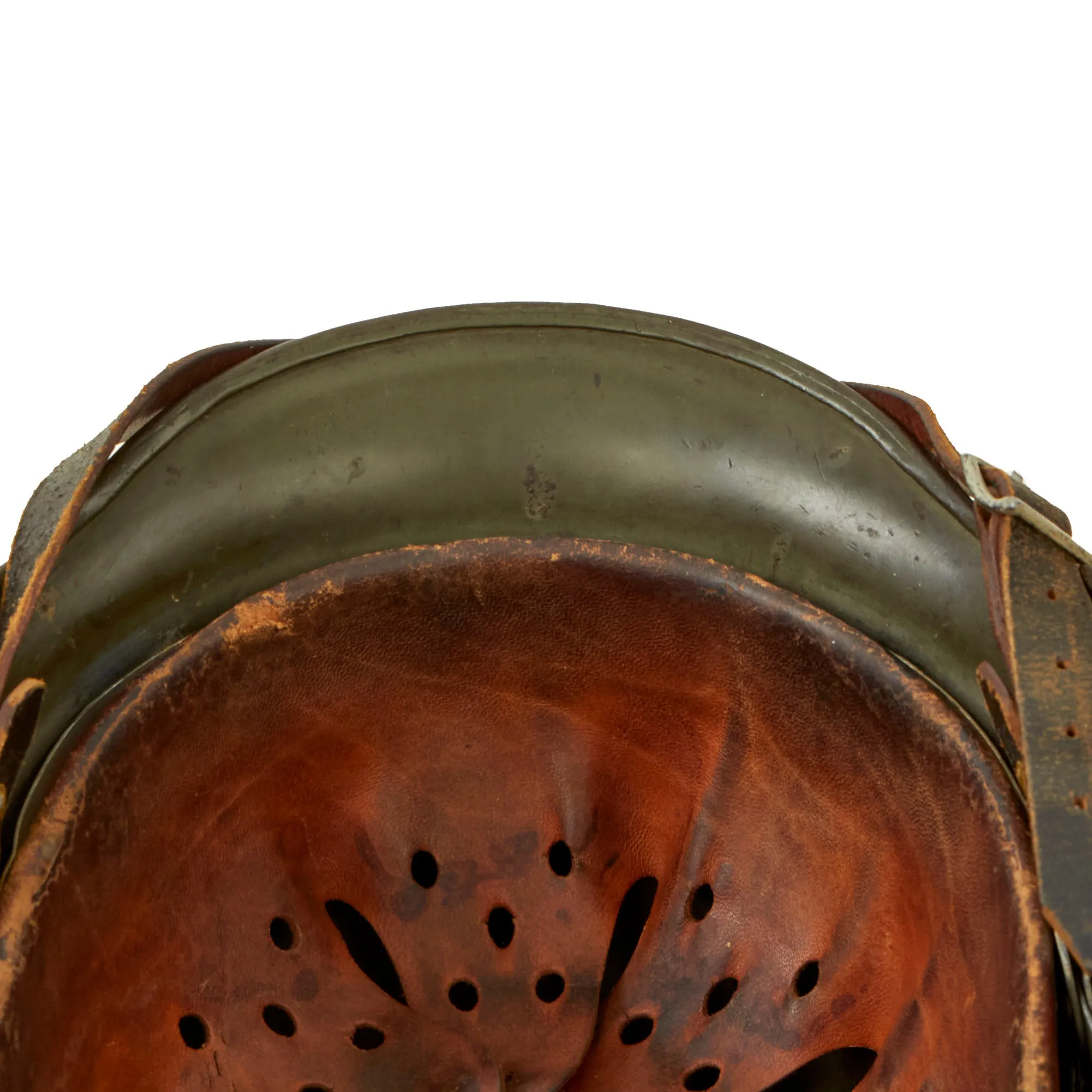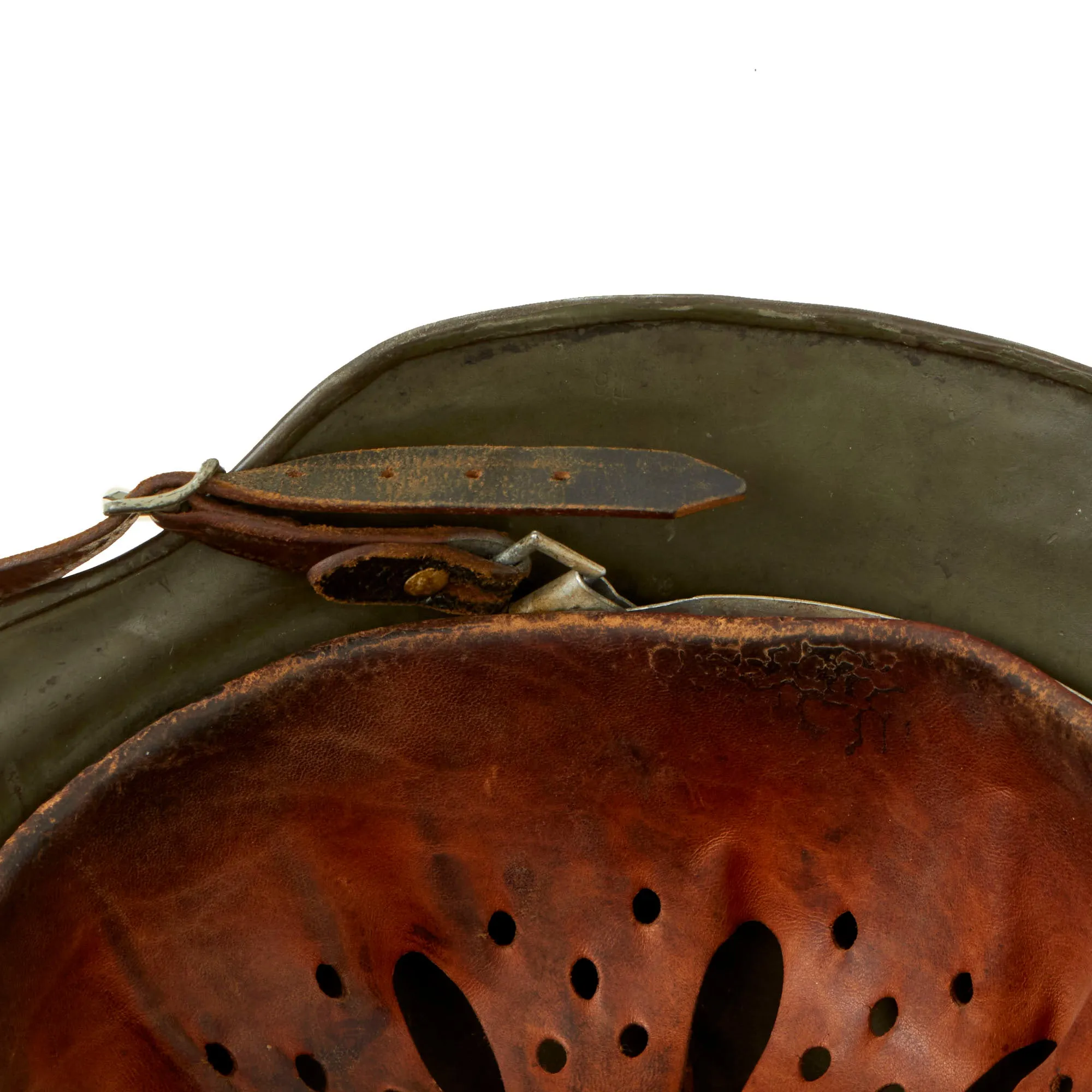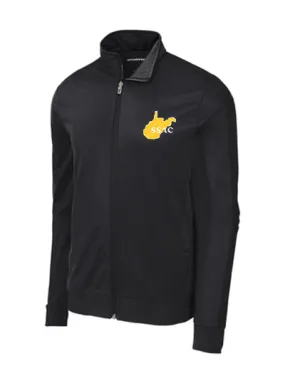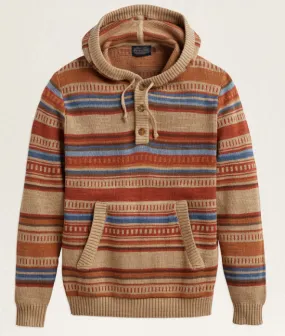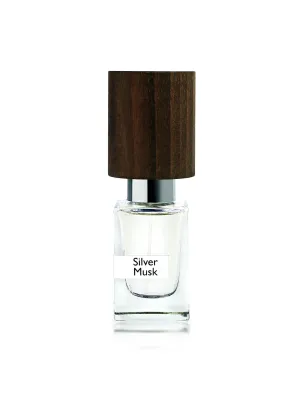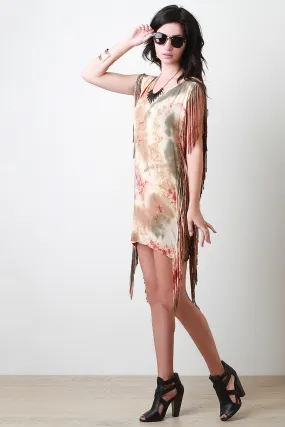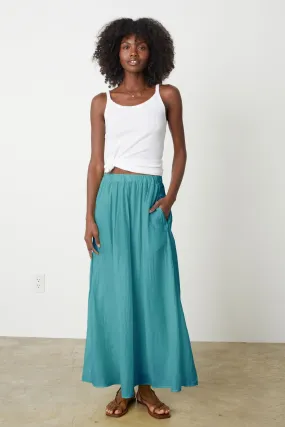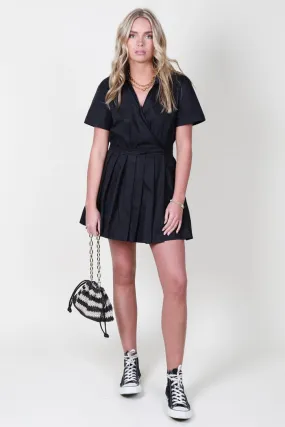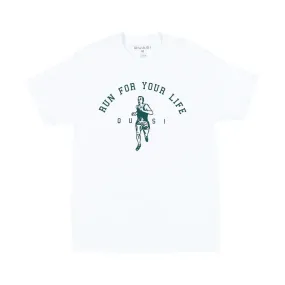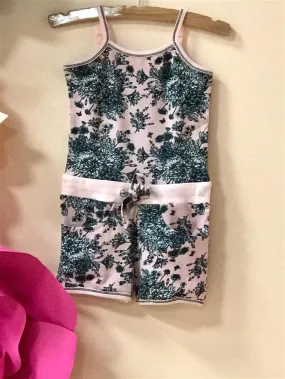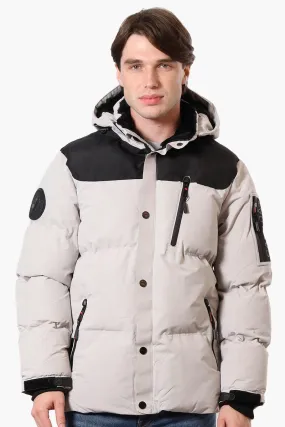Original Item: Only One Available. This is a rare all original example of a German WWII Model 1935 "Double Decal" helmet, as issued to the Heer (Army). As an early war helmet, it was originally painted with early Apfelgrün (apple green) paint, which is the early war color with more green in the mix. It also was equipped with "double decals", with a Heer Eagle on the left side and a National Colors on the right.
The use of the second decal was discontinued in 1940, and in 1943 it was ordered that helmets with the national colors have them removed. This helmet did not have the decal removed at that time, however the exterior of the helmet was arsenal refinished with a later war Panzergrau (armored gray) lightly textured paint job. This was left off of the Eagle decal, but the national colors decal was completely covered up. The interior however still retains the original apple green paint, and even has a faint "Dome Stamp" visible!
After the repaint, the helmet looks to have seen much additional service, which has worn the panzergrau paint, showing the original apple green paint, as well as areas where it was completely worn down to the steel, which shows oxidation. This has also removed some of the paint from the right side "National Colors" decal, so we can definitely see that it is still intact, under the paint. The left side Army Silver Eagle, which was never covered, shows wear from service, but is still bright and shiny, retained at probably 80%. This is a really nice example of a service worn helmet with lots of patina!
The reverse, interior, neck guard apron is heat lot number stamped 3663 and the interior, left side, apron has the stamped manufacturer's code and size, ET64 indicating that it was manufactured by Eisenhüttenwerk of Thale, located in the Harz district in Saxony, Germany. Size 64 is a nice medium size that can accommodate liners from 56cm to 57cm or US 7 to 7 1/8. Size 64 shells are harder to find and are therefore more valuable to a collector.
All three liner retaining pins are intact, however they look to have plated or alloy heads, so much of the paint has chipped away. The helmet still has its correct M31 liner with all of the 8 fingers present and supple, showing moderate wear with overall staining. There is some minor splitting around the rim, and the top tie string is present but aged. The liner band is aluminum, with square aluminum chin strap loops attached without any side reinforcements, which explains why the band is bent somewhat around the loops. Later Pre-war examples would have a double layer of aluminum on the side to prevent bending.
The left exterior of the liner band is marked 64 n.A / 57, indicating that it is a size 57 liner for a size 64 shell. The right side displays the full manufacture information, as well as a date:
BERL. KOFFERFABRIK
INH. MAX DENSOW
BERLIN 1937
This liner was made by the rare firm of Max Densow, Berliner Kofferfabrik (Berlin suitcase factory), who only manufactured M-31 liners until 1938. They never adopted the reinforced pattern of aluminum liner band.
The included chinstrap is in very good condition, showing moderate wear to the leather, with just a bit of deterioration, mainly the finish. It is the correct mid-late war example with a galvanized steel buckle, however the attachment studs are early war aluminum. It is faintly marked RAHM & KAMPMANN/ WUPPERTAL, however we cannot read the date. We assume this was a wartime replacement.
Overall a very nice 100% genuine M35 Former Double Decal Heer Army helmet, with no signs of being messed with! The period service wear on this gives it an absolutely unique look! This is an item that will only continue to appreciate in value over time!
The first "modern" steel helmets were introduced by the French army in early 1915 and were shortly followed by the British army later that year. With plans on the drawing board, experimental helmets in the field, ("Gaede" helmet), and some captured French and British helmets the German army began tests for their own steel helmet at the Kummersdorf Proving Grounds in November, and in the field in December 1915. An acceptable pattern was developed and approved and production began at Eisen-und Hüttenwerke, AG Thale/Harz, (Iron and Foundry Works), in the spring of 1916.
These first modern M16 helmets evolved into the M18 helmets by the end of WWI. The M16 and M18 helmets remained in usage through-out the Weimar Reichswehr, (National Defence Force, Circa 1919-1933), era and on into the early years of the Third Reich until the development of the smaller, lighter M35 style helmet in June 1935.
In 1934 tests began on an improved Stahlhelm, whose design was a development of World War I models. The Eisenhüttenwerke company of Thale carried out prototype design and testing, with Dr. Friedrich Schwerd once again taking a hand.
The new helmet was pressed from sheets of molybdenum steel in several stages. The size of the flared visor and skirt was reduced, and the large projecting lugs for the obsolete armor shield were eliminated. The ventilator holes were retained, but were set in smaller hollow rivets mounted to the helmet's shell. The edges of the shell were rolled over, creating a smooth edge along the helmet. Finally, a completely new leather suspension, or liner, was incorporated that greatly improved the helmet's safety, adjustability, and comfort for each wearer. These improvements made the new M1935 helmet lighter, more compact, and more comfortable to wear than the previous designs.
The Army's Supreme Command officially accepted the new helmet on June 25, 1935 and it was intended to replace all other helmets in service.
The M1935 design was slightly modified in 1940 to simplify its construction, the manufacturing process now incorporating more automated stamping methods. The principal change was to stamp the ventilator hole mounts directly onto the shell, rather than utilizing separate fittings. In other respects, the M1940 helmet was identical to the M1935. The Germans still referred to the M1940 as the M1935, while the M1940 designation were given by collectors.
The last wartime upgrade to the standard helmet took place on 6 July 1942 at the request of the Army High Command. The rolled edge found on M1935 and M1940 helmets was discontinued as a measure of economy. On 1 August 1942 the first M1942 helmets were placed into production, and this was the model produced until late in the war, when most factories were captured or stood idle due to material shortages.




